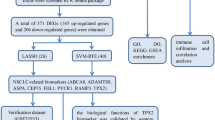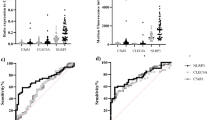Abstract
Previous reports raised question as to whether 8-chloro-cyclic adenosine 3,5-monophosphate (8-Cl-cAMP) is a prodrug for its metabolite, 8-Cl-adenosine which exerts growth inhibition in a broad spectrum of cancer cells. The present study was carried out to clarify overall cellular affects of 8-Cl-cAMP and 8-Cl-adenosine on SK-N-DZ human neuroblastoma cells by ystematically characterizing gene expression using radioactive human cDNA microarray. Microarray was prepared with PCR-amplified cDNA of 2,304 known genes spotted on nylon membranes, employing (33)P-labeled cDNAs of SK-N-DZ cells as a probe. the expression levels of approximately 100 cDNAs, representing about 8% of the total DNA elements on the array, were altered in 8-Cl-adenosine- or 8-Cl-cAMP-treated cells, respectively. The genome-wide expression of the two samples exhibited partial overlaps; different sets of up-regulated genes but the same set of down-regulated genes. 8-Cl-adenosine treatment up- egulated genes involved in differentiation and development (LIM protein, connexin 26, neogenin, neurofilament triplet L protein and p21(WAF1/CIP1)) and immune response such as natural killer cells protein 4, and down-regulated ones involved in proliferation and transformation (transforming growth factor-β, DYRK2, urokinase-type plasminogen activator and proteins involved in transcription and translation) which were in close parallel with those by 8-Cl-cAMP. Our results indicated that the two drugs shared common genomic pathways for the down-regulation of certain genes, but used distinct pathways for the up-regulation of different gene clusters. Based on the findings, we suggest that the anti-cancer activity of 8-Cl-cAMP results at least in part through 8-Cl-adenosine. Thus, the systematic use of DNA arrays can provide insight into the dynamic cellular pathways involved in anticancer activities of chemotherapeutics.
Similar content being viewed by others
Article PDF
Author information
Authors and Affiliations
Rights and permissions
This is an Open Access article distributed under the terms of the Creative Commons Attribution Non-Commercial License (http://creativecommons.org/licenses/by-nc/3.0/) which permits unrestricted non-commercial use, distribution, and reproduction in any medium, provided the original work is properly cited.
About this article
Cite this article
Park, G., Choe, J., Choo, HJ. et al. Genome-wide expression profiling of 8-chloroadenosine- and 8-chloro-cAMP-treated human neuroblastoma cells using radioactive human cDNA microarray. Exp Mol Med 34, 184–193 (2002). https://doi.org/10.1038/emm.2002.27
Published:
Issue date:
DOI: https://doi.org/10.1038/emm.2002.27
Keywords
This article is cited by
-
Characterization of DYRK2 (dual-specificity tyrosine-phosphorylation-regulated kinase 2) from Zebrafish (Dario rerio)
Chinese Journal of Oceanology and Limnology (2010)
-
The combination of sulfinosine and 8-Cl-cAMP induces synergistic cell growth inhibition of the human neuroblastoma cell line in vitro
Investigational New Drugs (2006)



